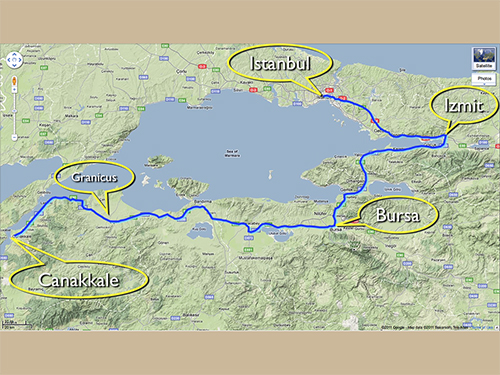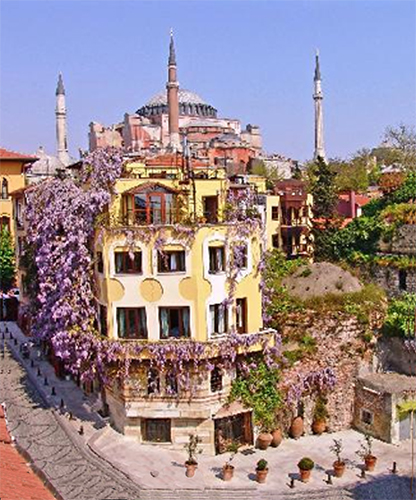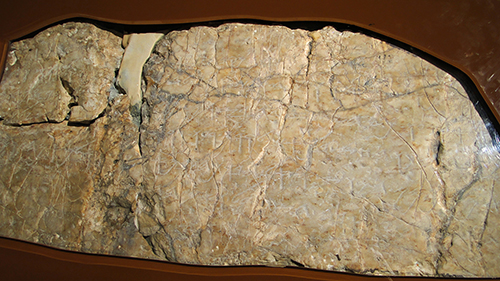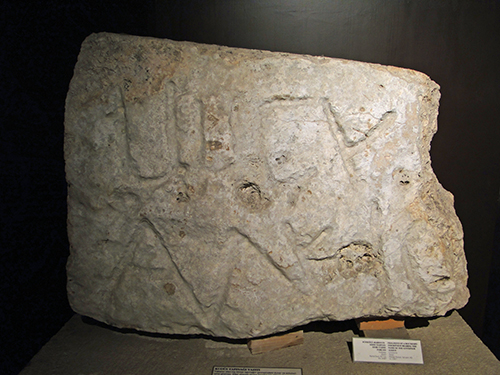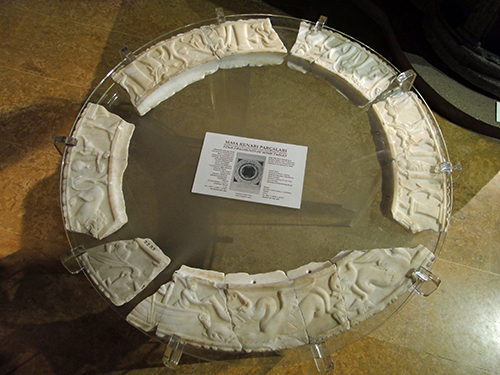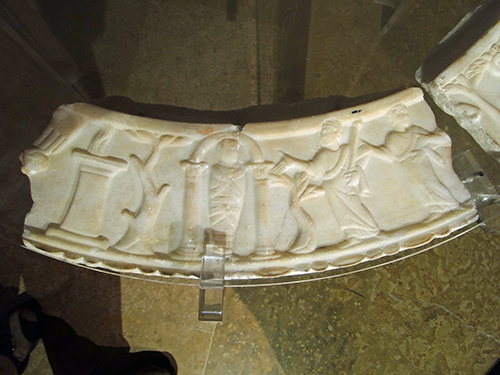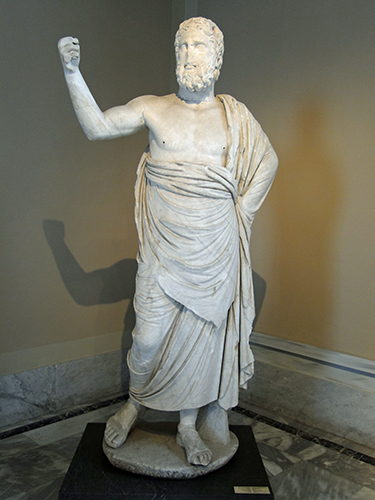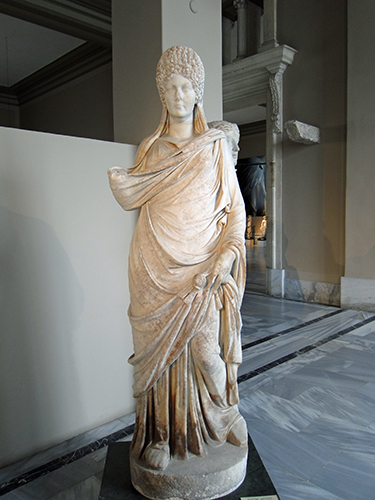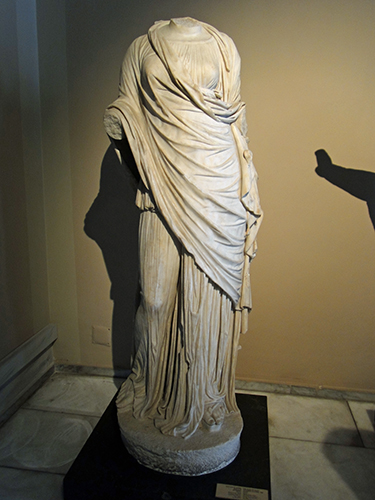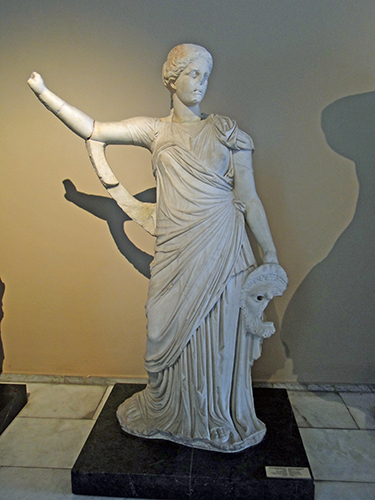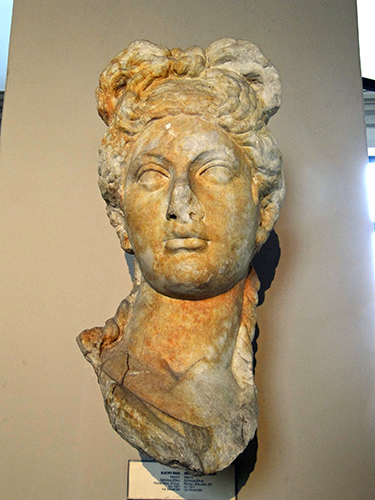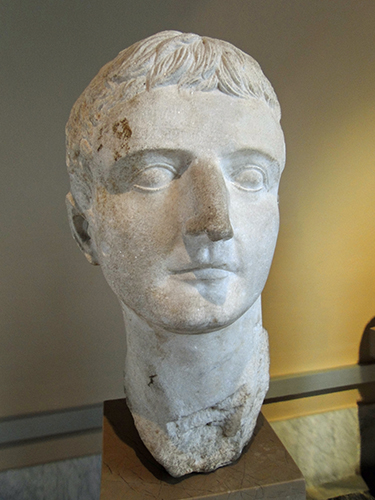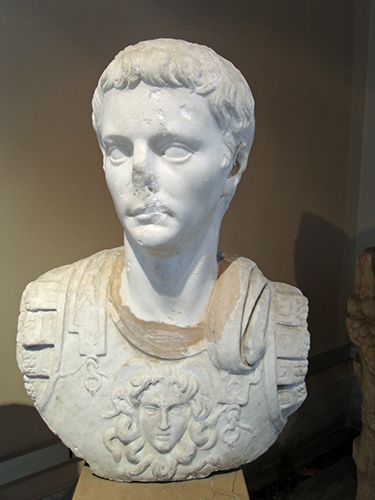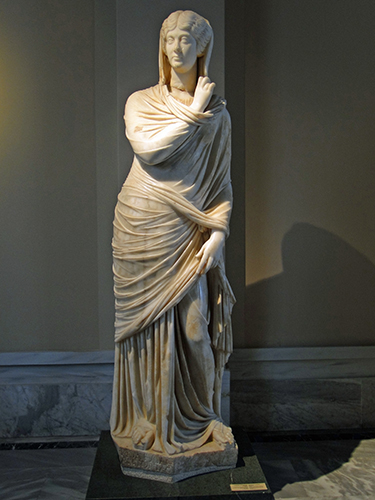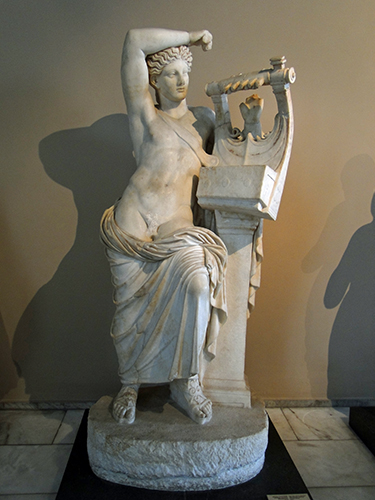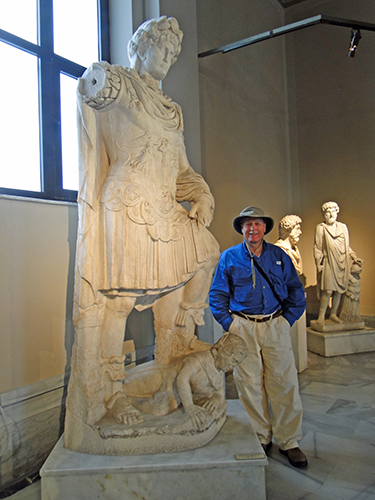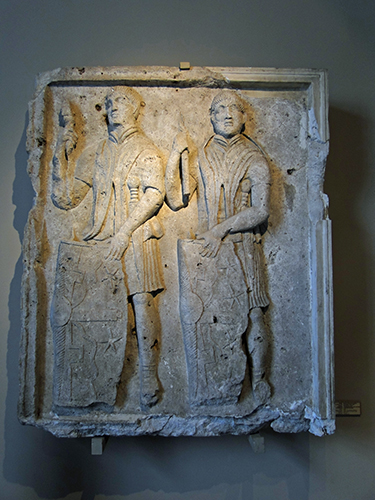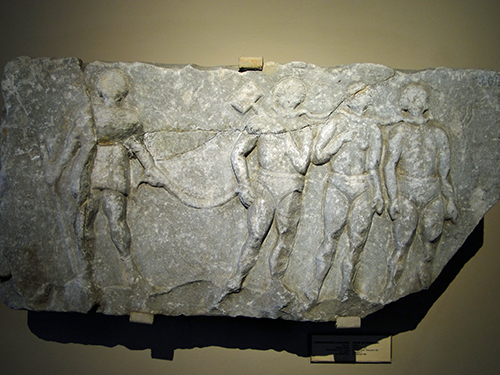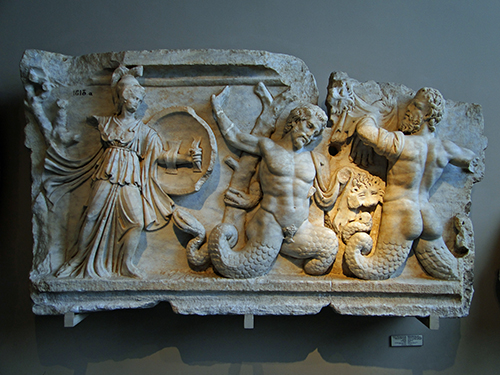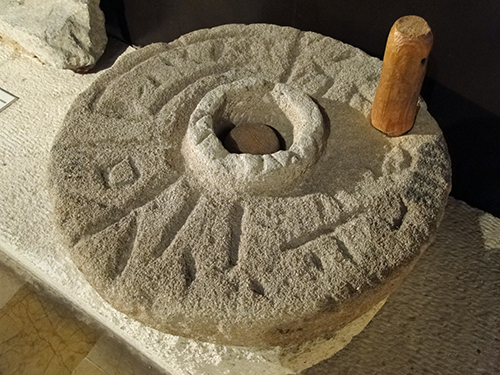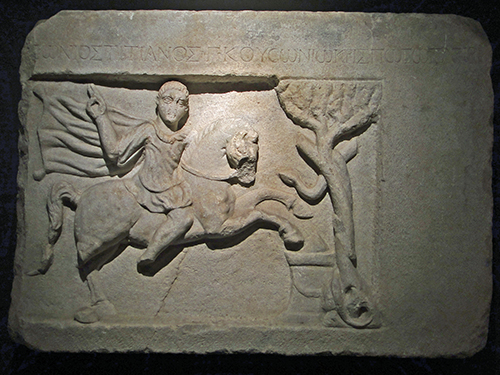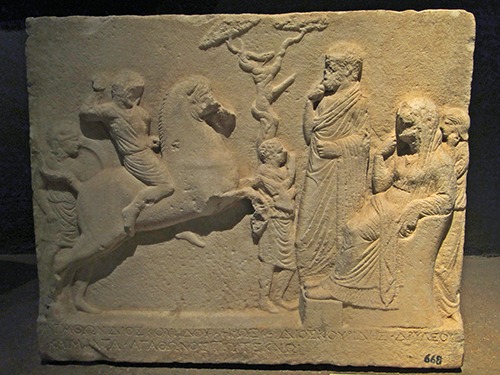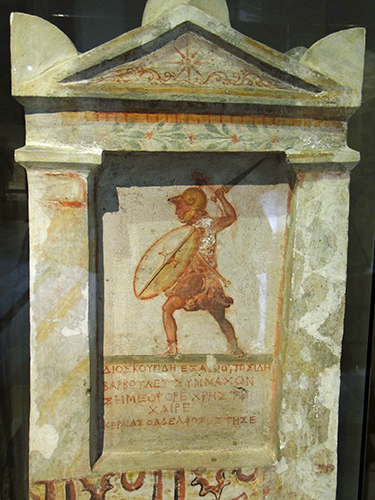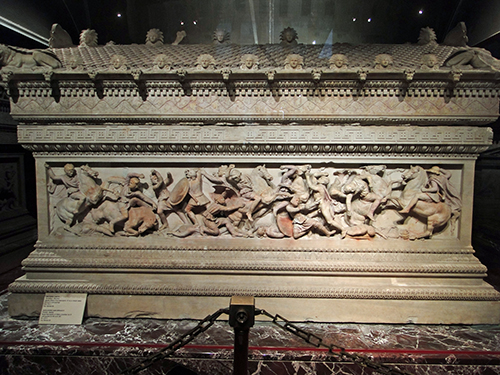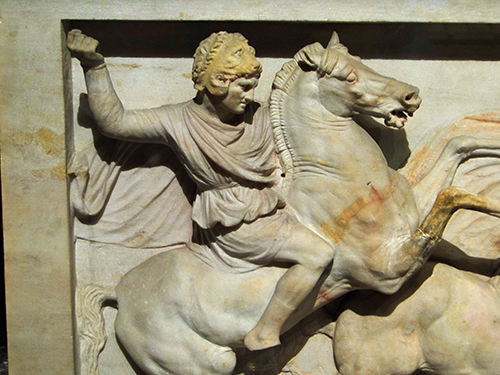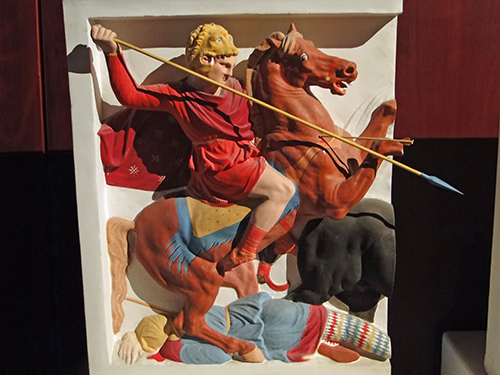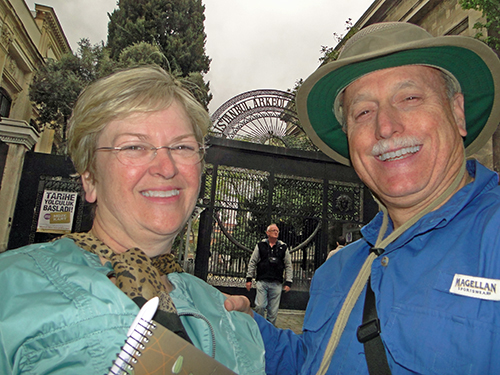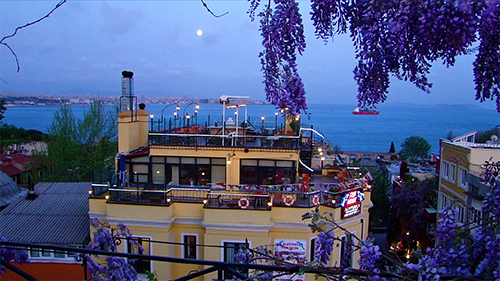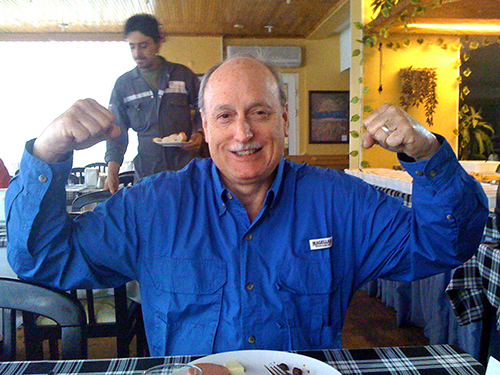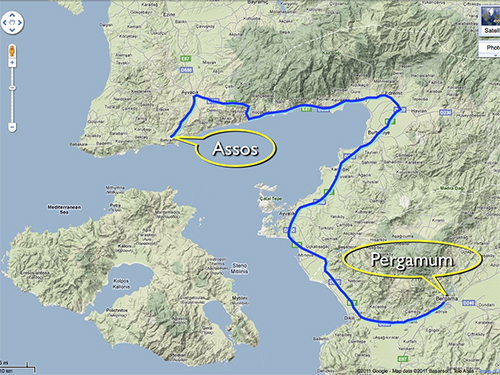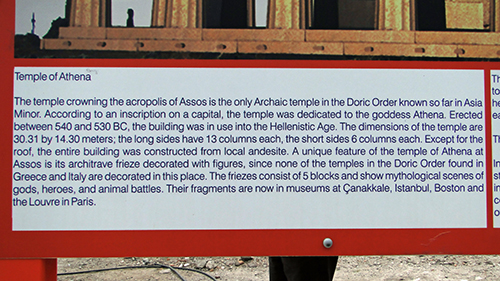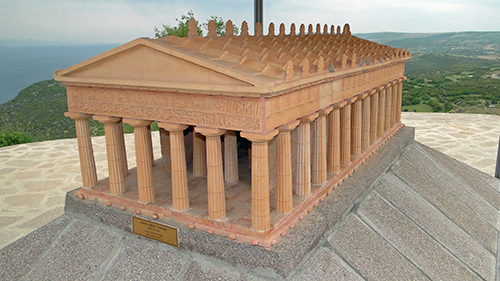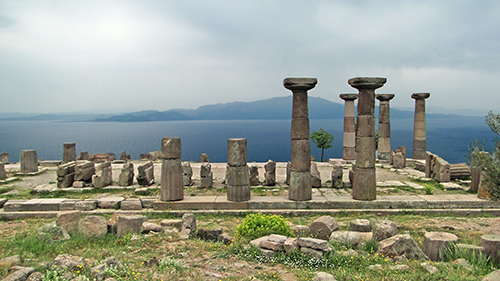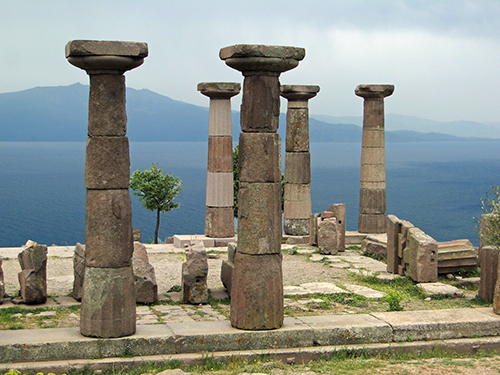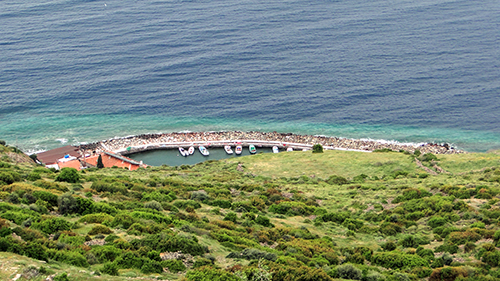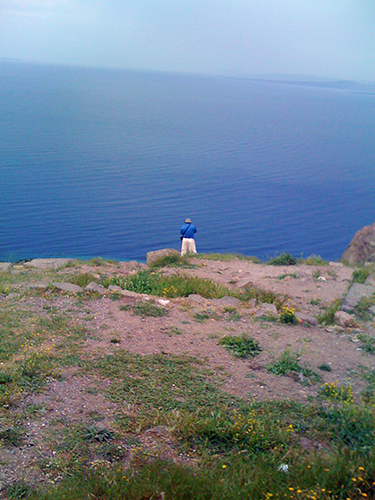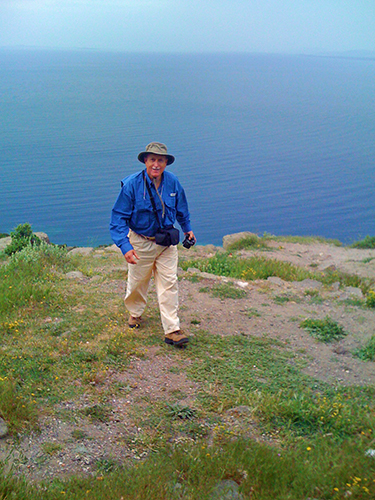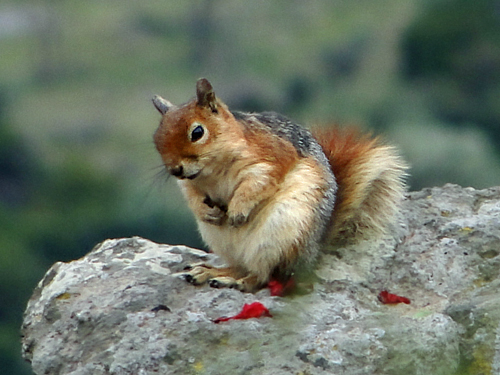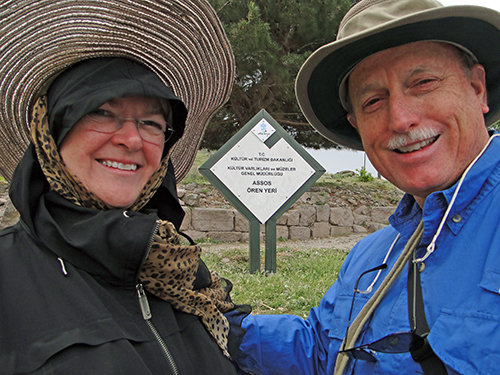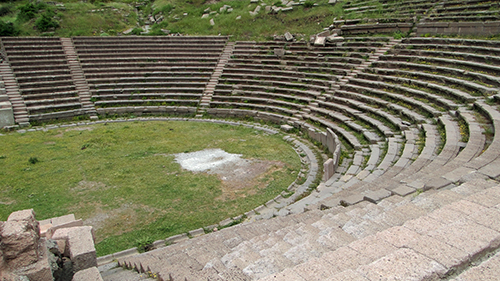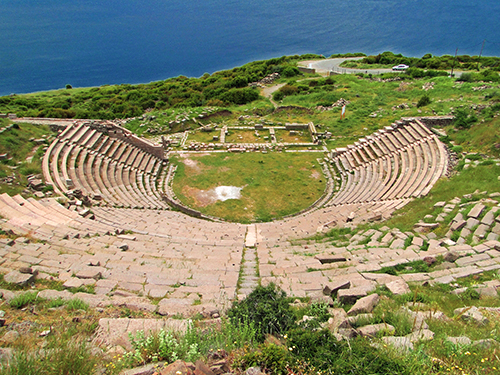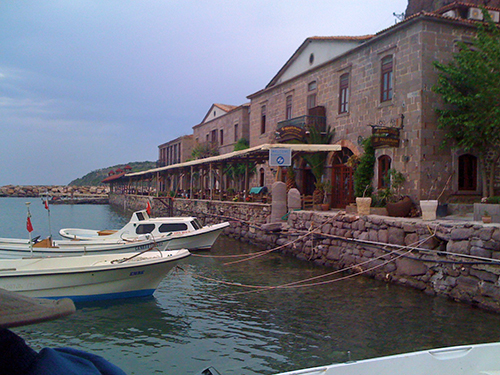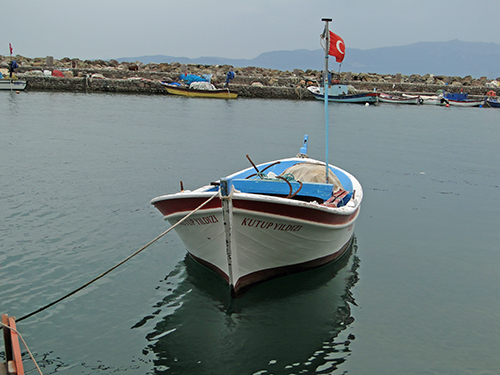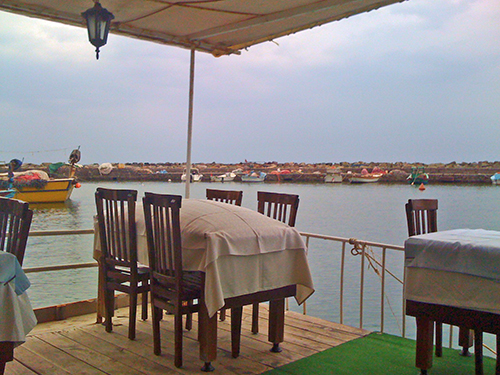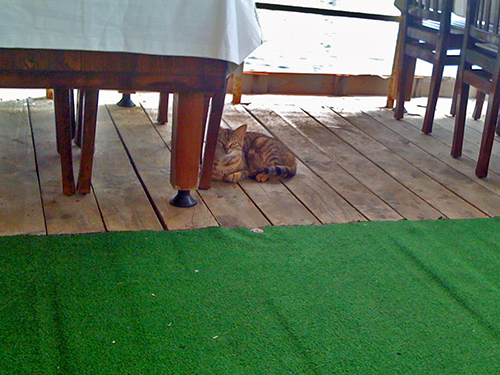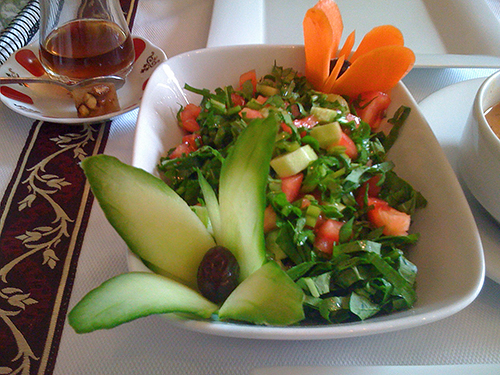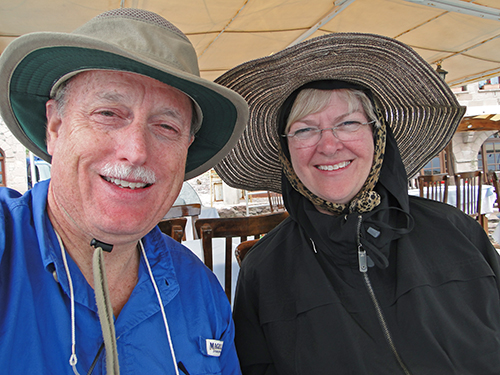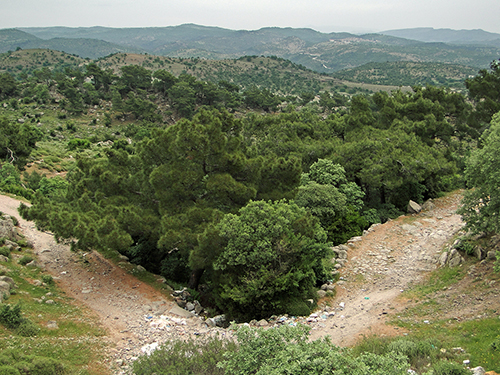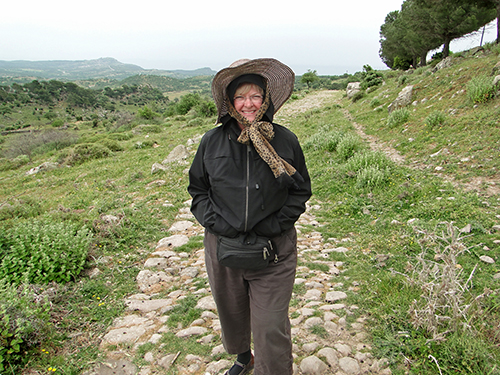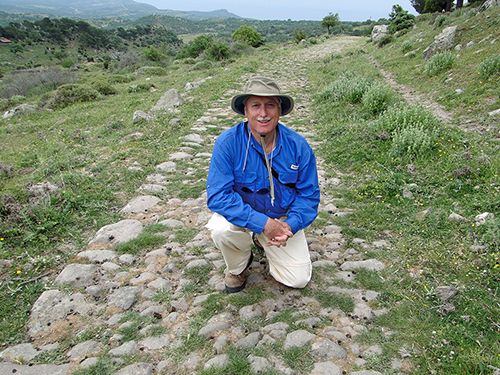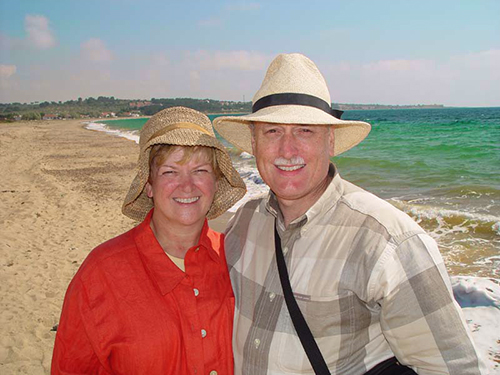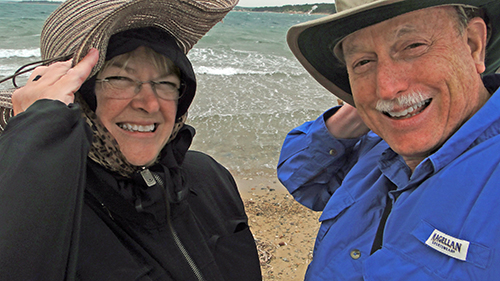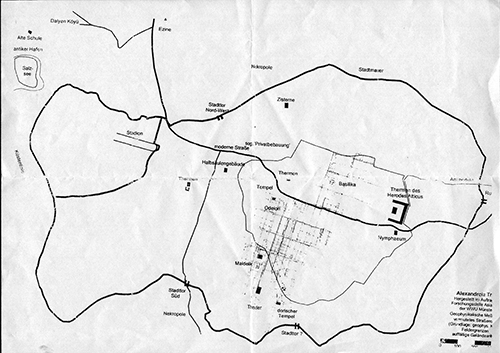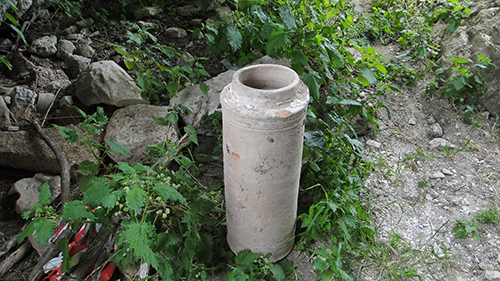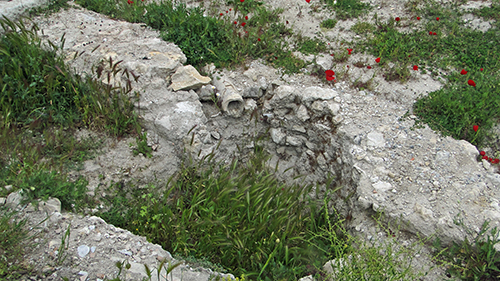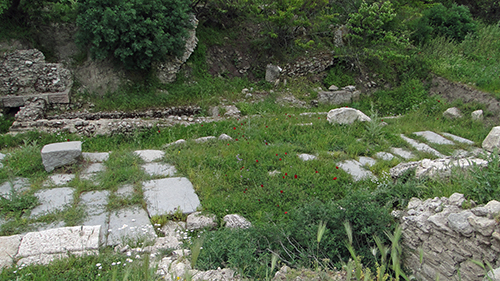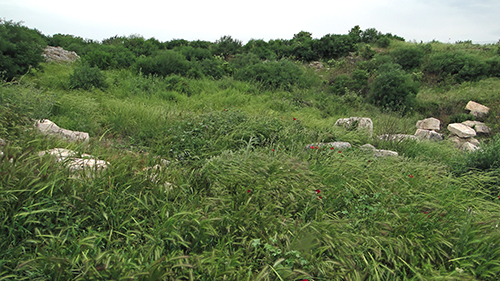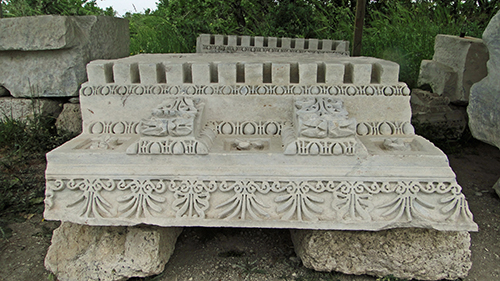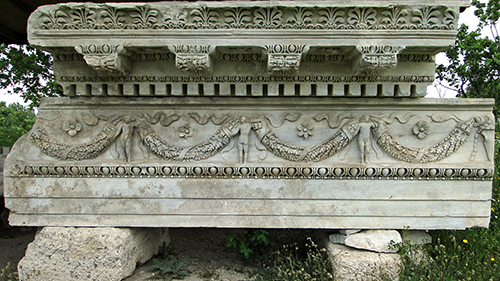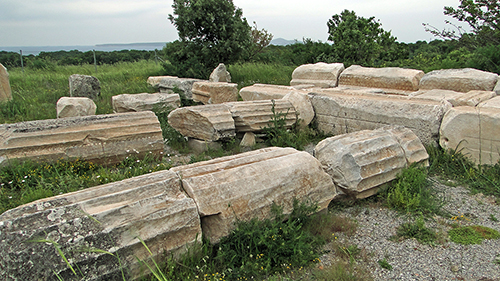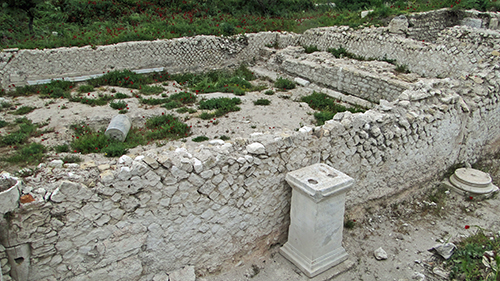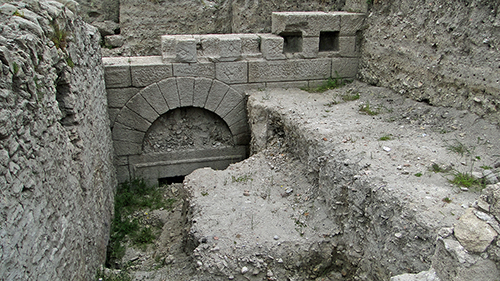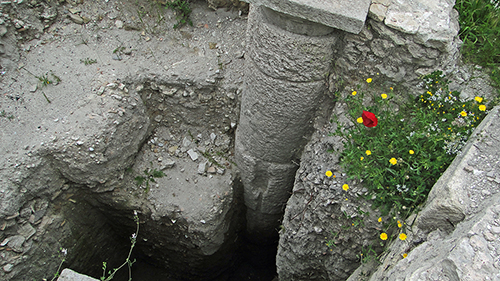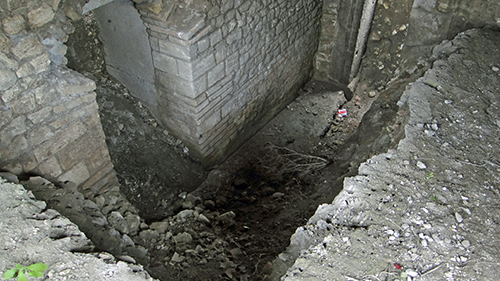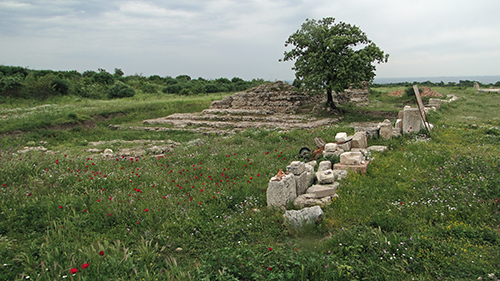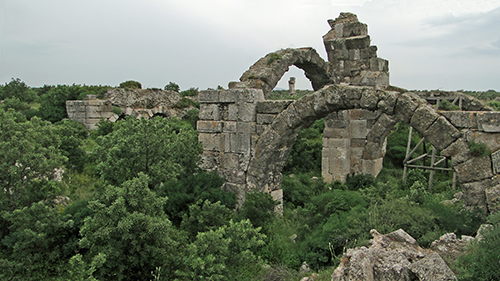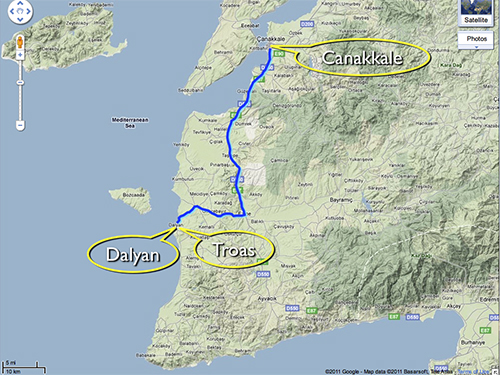I have finished cleaning up all my video links after the move of my WordPress blog from one hosting server to another this summer. All video links are now internal to the blog and do not take you to another web page. This new feature of embedded video files is especially helpful with the blogs related to our sabbatical trip overseas to Europe and Turkey. The trip was taken in April 2010, but the blogs, which were created from journal entries during the trip, were not posted until April 2011. To get to these travel entires quickly, then, just click the April 2011 calendar archive.
Archive for the ‘ Travel ’ Category
Video Links are Online
Author: DrKoineJul 23
Europe & Turkey—Day 28: Istanbul
Author: DrKoineApr 27
April 27, 2010 (Tuesday)
Canakkale. Jerry woke me up at 4:45 am so we can get on the road. We took our bags to the car and came back for breakfast, which was supposed to be at 6 am, but we find out has been changed to later in the morning at the insistence of the Koreans. So, we skip breakfast and get on the road at 5:31 am. The day is rainy and messy. I really don’t know how Jerry has stood all this driving. I know I never could do the job. I probably would have pulled to the side of the road the first day and called Avis to pick up the car.
We pass close by the site of the Battle of Granicus (334 B.C.) near modern Biga, Turkey, where Alexander the Great defeated the Persians in the first of three famous battles with the Persians on his way to conquering the world. Unfortunately, we do not have time to stop for a picture or two. Our drive pretty much follows the southern shore of the Marmara Sea. We have to catch a different highway at Bursa and then another one later at Izmit. Eventually, seven and a half hours later (!), we arrive at the International Airport in Istanbul about 1:00 PM. We did not even stop for lunch.
As we got into the terrible crush of Istanbul traffic in this city where millions live, we easily could have missed the necessary turns, but we didn’t. While I usually am the one watching out for and finding road signs and directions where to go, this time we made our destination only because Jerry barely happened to catch two important signs out of his peripheral vision as they raced by for necessary changes in our route toward the International Airport. Even catching these two important signs, however, by the thinnest of margins, we still had the weirdest thing happen as we were making our way into Istanbul.
Istanbul Mystery. We get to the International Airport by miracle actually. Here’s what happened, but we still don’t know what really happened. We entered into town on D100. This superhighway is like a massive Interstate with six lanes of traffic each way, going at Interstate speeds, almost bumper to bumper. We are just humming along this superhighway in one of the middle lanes, when, ultimately—in some mysterious way, completely unfathomable to us how—the speed of the lane we are in gets steadily slower, and the other lanes on either side of us just disappear. Jerry asked, “What’s happening?” to which I only could respond, “I have no idea.” He then asked, “Well, where is this thing taking us? Where are we? I thought we were in the middle of a superhighway only a minute ago!” “Me too!” I exclaimed. We are going downhill and getting slower and slower. Eventually, the road we are on just simply dead ends at the bottom of the mountainside at the wharf right on the water’s edge! How did we move in less than a minute or two from Interstate-like speeds to an absolute dead end at the water’s edge? I have no clue. What to do now?
Never fear! Jerry’s unbelievable radar kicked in. Like he had been on this side route a hundred times, he got a visual fix on the superhighway, which we could see way up above us at the top of the mountain curving its way to the major bridge over the Bosphorus Straights. He found his way, somehow, weaving back up the mountainside thorough busy traffic, stoplights, one-way streets, and the like, without one wrong turn or having to retrace our steps to start over—right to an egress getting us perfectly back onto to the bridge we needed to get across the Bosphoros Straights, just as if he knew the way! Amazing! Praise God! [But, we still do not know to this day what happened that put us at the bottom of the mountain at the water’s edge when we were in the middle of a superhighway—Jerry.]
International Airport. Now that we are back again in that traffic carrying millions of people millions of places, we still have a tough time following all signs and maneuvering correctly for the right lanes and turns to get to the airport. We have to get to the airport to return the car. We do not know what we will be facing at the car rental place, as we have to return a vehicle that has somewhat hidden damage to the front bumper and clear damage on the right side rear door, all happening that terrible time arriving and leaving Antalya. We plan to take a taxi to the hotel after returning the car, so we do not have to fool with returning the rental car (with its unknown time frame for dealing with the return) and trying to catch our plane tomorrow morning early. The airport is confusing because the car rental return is on the 3rd floor of a parking deck without anywhere to park the car! We pull up to what seemed to be the Avis area, and several men came out of the Avis booth and motioned for us to park behind other cars in a line, so we do. Then, 5 or 6 men start walking around the car, pointing to the dent and front bumper, waving their arms and talking Turkish. We have car rental insurance, but we are not sure how they work all this in Turkey. Finally, one man says, “is OK,” and then, pushing a form in front of Jerry, says, “sign,” so Jerry signed the paper, and that was that. We never heard from the rental company. All our worries and fretting during most of the trip over returning a damaged rental car are gone in a moment. Having returned the rental car successfully, we’re now off to find a taxi, which also is confusing. A couple of nice guys sense our predicament and help us find the taxi stand down an elevator at ground level.
Lost Treasure. We finally get to the taxi stand and Jerry notices that his Tarsus poster, which he was carrying in its cardboard tube under his arm, is missing, so he goes back up retracing his steps frantically to try to find the treasure, but to no avail. It’s gone. Disappeared. He’s so sad about losing that particular poster, because the girl at the Tarsus museum gave the print to him especially, pulling the artwork out of a closed case. The poster was a special commemorative limited edition of the Vatican’s millennial celebration of St. Paul in Tarsus. The girl behind the counter had seen how intense Jerry was about the museum artifacts that she had given him the poster as a special gift. Jerry was very touched by the gesture and was going to hang the poster proudly in his seminary office. He had carried the poster carefully everywhere all over Turkey for weeks, and now the prized limited-edition print is lost forever. He thinks he might have left the tube in the bathroom right before we took the elevator down.
Empress Zoe Hotel. After Jerry returns dejected with no poster, we continue to the taxi stand. Two taxi drivers get into a heated exchange about who is next, that is, who gets to take us. What a rig-a-ma-roll! Reminds us of the two taxis that showed up in front of our hotel in Berlin, Germany the morning we were going to the airport to fly to Turkey who argued who was going to get the fare. Finally, we are on the long drive to the hotel. When the taxi driver goes past our Empress Zoe Hotel, I have to tell him to go back. Very good thing that I already knew what the hotel looked like, since we had stayed there before on our previous trip to Istanbul. The hotel is right in the middle of things. The famous Blue Mosque can be seen immediately in the background of the hotel.
We check in. Our room is on the top floor this time—quite a climb of narrow, spiral stairs! We get settled in quickly, because we need to get to the Istanbul Archeological Museum before the place closes for the day.
Istanbul Archeological Museum. We walk the few blocks to the Istanbul Archeological Museum, precisely why we love the Empress Zoe Hotel. We go through the museum and search for the Caesarea Pontius Pilot inscription, but do not find the stone that is our only historical documentation independent of literary sources of the existence of Pontius Pilate. We do find lots of very interesting artifacts, including inscriptions, such as the Hezekiah inscription and an inscription from the temple in Jerusalem. After finishing the Archeological Museum, we go across the museum plaza to the other building to take a quick view of the Ancient Asia Museum, wondering if perhaps the Caesarea inscription might be there, but the inscription is not there either. Jerry now is wondering if his information is mistaken; he thinks the inscription actually might be housed somewhere in a museum in Jerusalem.
The museum holds an important Hebrew inscription taken from King Hezekiah’s tunnel dated from 716–687 B.C., built to access a water supply from the Gihon Spring to East Jerusalem’s Pool of Siloam. The inscription records the work on the tunnel and is one of the oldest Hebrew inscriptions of its kind using the Paleo-Hebrew alphabet.
Another inscription on limestone below dates from the 1st cent. A.D. and documents the prohibition against profaning the sanctity of the inner compound of the Jewish temple in Jerusalem. The inscription reads: No intruder is allowed in the courtyard and within the wall surrounding the temple. Whoever enters will invite death for himself. In the New Testament one can compare the mob riot against Paul when he was believed to have brought the Gentile Trophimus into the inner temple area (Acts 21:27–29) and Paul’s metaphor about breaking down the dividing wall between Jew and Gentile (Eph 2:11–14).
The following image shows a fragment of a 1st cent. A.D. boundary marker found in Gezer in Palestine. The inscription bears the name of a governor, Alkios.
Most fascinating was a round table whose outer circumference displayed a band of reliefs depicting various biblical scenes, such as Adam and Eve, Abraham offering Isaac, and Daniel in the lions den. One in particular that caught Jerry’s eye was a relief depicting Jesus raising Lazarus. The table hails from Laodicea about the 4th cent. A.D.
Statuary from various locations in Turkey were well represented. These included: the supreme god Zeus found in Pergamum dating 2nd cent. A.D.; a beautiful 2nd cent. A.D. statue of a woman from Aphrodisias; Polemeanus, proconsul of Asia from 106–107 A.D.; a 2nd cent. A.D. statue of Euterpe from the Bath of Faustina in Miletus and another similar statue of Euterpe from Miletus; also from Miletus was a statue of Melpomene, dated 2nd cent. A.D.; the head of a woman, taken from 2nd cent. A.D. Ephesus; the head of the emperor Tiberius (14–37 A.D.) from Pergamum; the head of the emperor Claudius (41–54) from Izmir; a beautiful 2nd cent. A.D. statue of Cornelia Antonio from Antioch of Pisidia; a 1st cent. A.D. statue of the goddess Athena from Manisa (ancient Magnesia); and a 2nd cent. A.D. statue of the god Apollo in the Greek “heroic” fashion from Miletus.
A colossal statue of the emperor Hadrian (117–138) illustrates the style of Roman imperial propaganda. Hadrian is depicted as larger than life. He is dressed with regal robe draping his neck and decked out with the imperial military cuirass. He stands triumphantly, with his boot on the neck of the vanquished enemy. The enemy is portrayed in a humiliating style as pigmy in size, forced down on the ground in submission, prostrate before the Roman general. So much for the consequences of opposing invincible Rome.
The relief below depicts Trajan’s (98–117) victory over the Dacians. The relief hails from modern-day Romania.
The relief below shows prisoners bound at the neck. The relief is 2nd–3rd cent. A.D. from Miletus.
The god Hercules depicted in the relief below dates to to the 2nd cent. A.D. and is a rare artifact from Iconium (cf. Paul’s first missionary journey, Acts 13:51–14:6).
Aphrodisias yields a beautiful 2nd cent. A,D. relief depicting the goddess Athena in her quarrel with Poseidon, god of the sea, over possession of Attica. The style is overtly imitative of the great Altar of Zeus in Pergamum.
The 2nd cent. A.D. marble carving below was found in Ephesus. The wonderful workmanship depicts Oceanus, a concept held by both Greeks and Romans of a world-ocean, or global river that supported all inhabitable lands. He was personified as Titan in Greek myth, and after Poseidon later came on the stage of the Greek gods, Oceanus was understood to rule over the unknown waters of the Atlantic, while Poseidon ruled the Mediterranean ocean.
The museum has some mosaics. The scenes presented are the typical fare. The scene below is a gladiator with spear. In the following relief is another gladiatorial scene showing the early morning “warm-up” fights with beasts of various kinds. One is reminded of Paul’s strong metaphor, “even if according to human ways I fought with beasts at Ephesus” (1 Cor 15:32).
The millstone was used for grinding meal. The one below is from Polymyra, Roman period. The diameter is about finger to elbow. One can imagine how heavy this stone is and then recall the statement of Jesus: But whoever should cause to stumble one of the least of these who believe in me would be better for that person that the millstone of a donkey be hung around the neck and thrown into the depths of the open sea (Matt 18:6).
Several gravestones caught Jerry’s eye that were from the early Roman period. The first one below is from Thessalonica, 1st cent. A.D., of a Gaeus Cousonios Cusipus. The following one also is from Thessalonica, 1st–2nd cent. A.D., of one named Agathon. A painted limestone grave marker from Sidon of Lebanon has this inscription: O D [illegible] of Pisidia–Balboura, son of Exabous, the standard bearer of the allied forces, good man, farewell. His brother Ceraios had this erected. The final image shows a finely executed relief from a 1st cent. B.C. tomb monument that was done for Tiberius Flavius Miccaulus, who was both a prefect and priest. The monument and its almost life-size relief is rather large and imposing and displays military dress and armor with great detail.
One of the most striking exhibits at the Istanbul Archeological Museum is the so-called “Tomb of Alexander.” This sarcophagus is not really the tomb of Alexander the Great, but probably was a tomb monument for one of his successors. Alexander the Great is depicted in the elaborate reliefs surrounding the outside of the tomb, and, hence, the name. The following image provides a closeup of the far left of the relief below, and shows Alexander in the heat of battle. Many people do not realize that most of these great monuments would have been brightly painted. The museum provides a separate display on a wall close to the sarcophagus that shows how the same image would have appeared originally in its bright colors, which is given in the third image below.
Strolling Around. After finishing the museums, we walk casually back towards the hotel. The weather is turning cool again, and it’s windy! We are finishing our overseas adventure like we had begun in London—cool and breezy. We stop to eat at a very nice restaurant, which is our first meal of the day, since we missed breakfast because of the Koreans at Canakkale, and we drove hard all day without stopping for lunch to get to Istanbul. We have wonderful soup and salad. Jerry has shrimp casserole, and I have chicken spaghetti. Delicious. After eating, we shopped across the street and found some nice souvenirs for several people. The owner insisted on showing us carpets at his other shop across the street, so we looked. He was very nice, and we did enjoy looking at a very beautiful antique carpet in particular. Also, he had a picture of a beautiful cat in his shop window, and I asked about the cat. This feline is white with gorgeously blue eyes, and we find out the cat has just had kittens and is across the street at his other shop. The shopkeeper takes us back across the street to see her and the kittens tucked away in a cubicle with a small curtain entrance in the back part of the other shop. They are so pretty!
Back at our hotel, we use wifi to call mother, Cindy, John/Donna, Angela, etc., and post on Twitter and Facebook. The hotel comes with its own complement of cats, one for each floor. This one joined us for the Twitter and Facebook sessions.
Jerry went out onto the terrace veranda to see the ships moving through the Bosphorus Straights up into the Black Sea and back down out to the Marmara Sea. The city of Istanbul straddles both sides of the southern end of the straights. He caught a picturesque evening image of the purple wisteria blooms dancing on the ends of their limbs against the backdrop of the ghostly haloed moon rising above the shimmering water.
Jerry returns to the room and backs up his pictures from this last day of the trip, and we get ready for bed. We have to get up in only a few short hours at 3:00 am to head back out to the airport and—home!
So, thus ends our April 2010 adventure to Europe and Turkey. The trip has had a sort of Charles Dickens character—“It was the best of times. It was the worst of times.”
For a video of today’s action in Istanbul:
Europe & Turkey—Day 27: Assos and Troas
Author: DrKoineApr 26
April 26, 2010 (Monday)
Up early and to breakfast, which is pretty minimal at the Iskender, with not even a bowl of cereal. 🙁 Jerry still insists he is going to have a great day anyway. If you knew how much Jerry loves breakfast, you would know he was being a real trouper!
On the Road Again. After “breakfast,” we start off for Assos. Assos was a stop for Paul and company on the return of the 3rd missionary journey (Acts 20:13–14). We basically follow the main highway in this part of Turkey, D550, which also is E87, that runs on up to the major city of Canakkale. So we just keep following signs to Canakkale. We travel pretty much along the coastline with the big island of Lesbos on the sea’s horizon off to our left. Highway D550 eventually departs inland from the coastline to take a valley pass through some foothills that run to the edge of the seacoast. As we reach the city of Ayvacik, we are glad to see a sign directing us to turn left to go to Assos. The highway actually has a number, 17-51, but that is not to say this is a highway. Off we go down small streets, through several villages, where, without fail at each village, there’s at least one small café with a bunch of Turkish men sitting around doing nothing. What is that? Unemployment? Laziness? We noted the same thing in 2002.
Assos. We finally arrive at the “modern” village of Behran on the coast close to the ancient site of Assos. “Modern” is a relative term here. Let’s just say there’s one broken down car and no golden arches, so you get the picture. We notice that tourists are walking down a steep hill, so Jerry hikes up the hill to figure out where to go. In fact, this hill is the acropolis of ancient Assos. He finds the bilet (ticket) booth and comes back to get me. It’s a long climb up this hill, but we finally make the ticket booth with a few breaks for me.
Athena Temple. We go in the gate and climb some more. At the top of the acropolis is a temple to Athena and a view of the Assos harbor below. Too bad the weather is so grey today. The view on a sunny day would be spectacular. A nice display nearby educates visitors to the construction and significance of the Athena Temple, including a full-color drawing and a scale model.
The following panorama view of the Mediterranean Sea is from high up on the acropolis of Assos. To get this shot, Jerry, of course, is right on the edge of the acropolis ledge. (Where else?) The Assos harbor is the faint white jut out into the sea to the far left of the image.
Here is a shot of the Assos harbor far below the acropolis using the full zoom of the camera. You can see how the harbor is still in use today.
We watched a squirrel sitting on one of the boulders, so we can add an Assos squirrel to our animal collection for the trip (Laodicia lizard, Perge turtle, Derbe prairie dogs, etc.).
Assos Theater. After hiking back to the car, we drive down the steep hillside to visit the harbor. We travel along a narrow, treacherous, and winding road, which is rather nerve wracking to me. Jerry is quite the pro, especially at figuring out pullover spots anticipating when we need to let cars coming back up from the harbor get by us. On the way, we pass the Assos theater. We stop so Jerry can go take pictures of the theater. The theater is not that well preserved past its first section. However, you still can imagine how beautiful the Mediterranean navy blue made for a backdrop to this theater!
Harbor Lunch. We finally arrive at the harbor, which is beautiful and quaint. We find a restaurant, use their facilities, and eat lunch at a table by the water. The fish was freshly caught. I had brim and Jerry had a swordfish kabob. The food was delicious, and the scenery so picturesque—even on a cold, cloudy, windy day.
We are having lunch at the harbor where Paul would have joined back up with Luke and others for the trip on down to Miletus after walking by himself down the Roman road from Troas to Assos at the end of the 3rd missionary journey (Acts 20:13–14). Paul was here!!! Even with the inclement weather proving a challenge for getting the postcard-pretty pictures he always wants, Jerry could not have been more content.
After our main dish, we have the traditional hot Turkish tea, which is so wonderful in the chill of the air, and then pay the 85TL bill. The money was well worth the experience, and made up for our hotel back in Bergama this morning serving only a minimal breakfast (not even cereal). Jerry was right. We did have a great day anyway!
Roman Road. After lunch, we head off for Alexandria Troas, which is about 60 km to the northwest of Assos. Rather than going back up the little 17-51 road we came down to the coast on and then catching the D550 superhighway back at Ayvacik, we decide to take the scenic route running right near the coastline. This route, which is highway 17-52, in part actually follows the old Roman road that ran from Troas to Assos. That decision turned out to be a great one—quite fortuitous!
As we are driving along, I remembered that our friend, Mark Wilson, during our harbor dinner at Izmir had said that a part of the ancient Roman road is visible between Assos and Troas, so I started looking to see if I could spot any remains as Jerry was driving. I suddenly catch a glimpse of what I think is the old Roman road. Jerry stops, backs up, pulls over to the side of the road, and disappears down the embankment to investigate the situation. He comes back up to announce excitedly, that, sure enough, what I had glimpsed is clearly a portion of the ancient Roman road! We know that Paul traveled overland from Troas to Assos by foot while his companions took a ship down to Assos (Acts 20:13–14), so Paul would have walked this road.
What a feeling to walk that road! The day is quite overcast, quite windy, and quite cold, but the experience of walking where Paul walked is definitely worth braving the elements.
Catching this unmarked Roman road was lagniappe fit for a king as far as Jerry was concerned. He relished the discovery and soaked in the moment thoroughly. Today was our last full day of touring, and Jerry finally got to walk a Roman road Paul had walked on this trip. We were locked out of the Roman road uncovered in downtown Tarsus, and we missed finding the Roman road on the way to Derbe, so this looked like the trip overseas where Jerry never would have the chance to walk a Roman road. Yet, here by the mere coincidence of a spontaneous decision to take the scenic route by the sea rather than the superhighway inland, we find a Roman road we know Paul walked. Yes, indeed, Jerry was right early this morning. We truly did have a great day!
Doesn’t matter whether anything is there to be seen, my Pauline scholar just wants to walk any road the great missionary to the Gentiles walked. I can tell his sense of indebtedness to Paul is keen. My devoted scholar mused that had Paul not walked this road, he might never have heard the gospel of saving faith in Christ. To be such an academic, Jerry sure has a devotional spirit.
We proceed along the mountain foothills following the meandering, narrow highway through small villages and pastoral scenes with sheep grazing. As we are traveling, we saw a man riding a donkey down the road. The sight provoked me to wonder out loud to Jerry whether perhaps Paul rode a donkey during any of his travels. I then immediately followed that up with a comment wondering if they had “Avis Rent-A-Donkey” available back then. We had a good laugh at that thought.
Dalyan. We got to Dalyan, a village on the Mediterranean coast close to Troas. We wanted to visit the beach where we had taken one of my favorite photos from the 2002 trip. This time however, the skies were heavily overcast, with a front moving in and the wind blowing stiffly, producing a serious wind chill factor. We take a picture on the beach, but the contrast from the 2002 picture could not be more dramatic! This time is absolutely freezing with the wind blowing really hard and no sun. In 2002 the day was sunny, warm, and beautiful when we were here. Compare for yourself below!
Troas. On to Troas, only a few kilometers inland form the Dalyan beach, where we find a “car park” on this go-round—the place has developed just a little since we last were here. Jerry reveres the site of Troas, since, he points out, Troas is where Paul’s 2nd missionary journey really got kicked off in earnest after Paul had gotten off track in his fight with Barnabas over John Mark (Acts 15:36–40). At Troas, Paul received a renewed sense of call to mission and specific direction from God in his famous “vision of the Macedonian” (Acts 16:8–10). The stopover at Troas also is important because Troas is where Paul picked up Luke, his lifelong and trusted missionary companion. This connection of Luke to Troas is implicit in the Acts text, because the narrative shifts from third person to first person plural, “we,” right at this point in telling the vision of the Macedonian—the beginning of the first of three “we sections” in the text in Acts (Acts 16:10). So Jerry loves to visit Troas, even with hardly anything above ground to see there.
Just as we arrive, a man who is the attendant at the ticket gate is about to leave the site on a motorcycle, apparently at the end of his workday. However, though he probably could have driven on off, leaving us without assistance or direction, he stops when we pull up. He is kind. He offers to stay, even with the inclement weather. He gets back off his bike, and proceeds to show us all the newer excavations, which are very interesting. He even gives us a schematic of the archeological site, which is nice to have to orient to where various ruins are scattered about in the thick overgrowth. The schematic is in German, but Jerry gets his bearings with this resource.
The site is very overgrown, so we have to walk through tall grasses and weeds waist high at times. Our guide moved fast. Quite a tour—he even showed us some human teeth from a jawbone that they found during excavations. Just as we arrive back at the car, rain begins a steady, cold drizzle, so I wait in the car while Jerry dons his poncho and heads back to take some pictures. The “tour” the attendant led us on was so fast that Jerry had no time to compose pictures. He regrets that he cannot give much information about the significance of the finds, since he did not even have time to jot down any notes as the attendant talked while walking rapidly along. Jerry is glad to see this part of the site has had some attention since our last visit in 2002, but he wishes descriptive signs could be posted!
The terracotta piping so common to Roman period construction is evident now at Troas. One nicely preserved section was just sitting propped up on the ground. Jerry speculates the second image is a cistern fed by a terracotta pipe for collecting rain water.
The foundations of buildings and temples are evident now that we never saw in our first visit. The outlines of the typical broad, collonnaded streets can be determined in conjunction with the remains of these buildings.
Below is pictured the remains of the odeon, which is the smaller theater intended for musical performances, poetry recitations, and other assemblies. The outline of the seating area is more evident in person than in the image.
Some of the lintels for the collonnaded streets or entrances into buildings allude to a former grandeur for Troas. Apparently, the archeologists do not have the columns that go with these lintels, or else do not have the necessary heavy lifting equipment and cranes such as we saw at the on-going work at Laodicea. That kind of machinery takes a boatload of money.
The rectangular base in the picture below has a Latin inscription. The pedestal probably represents an honorarium for a leading citizen or public official of Troas.
The levels of earlier occupations in centuries gone by that are hidden away just a few feet beneath the present ground level are apparent in these images.
Fortunately the structure below has been identified. A sign leaning up on a block to the right in the picture gives some information in German. These steps are all that is left of the Agora Temple that was next to the Troas market. The structure apparently had been misidentified in earlier work, because the description used to be the Temple of Augustus.
Down the road a little on the other side of the highway is the site of the Herod Atticus arches, the most visible ruins of ancient Troas left behind today, which we had explored before. This part of the site, however, now is very overgrown and hardly recognizable, and makes Jerry very sad that no one is taking care of the beautiful treasures. Herod Attitcus was a wealthy, 2nd century Greek aristocrat and Roman senator who also was a Sophist philosopher. He always was in good standing with successive emperors. Emperor Hadrian appointed him prefect of the free cities of Asia in 125, and emperor Antoninus Pius appointed him as a consul in 143. During his life, Herod Atticus was well known for his philanthropy and gifts to public works. One of these gifts was the aquaduct system at Troas that helped support a bath complex in the eastern part of the city. The arches for the aquaduct can barely be seen in the background of the picture below, as well as some surviving arches in the foreground of the bathhouse complex.
Canakkale. After finishing the Troas site, we retrace our steps back to Dalyan, catching 17-52 to head east over to Ezine, where we can pick up the main highway again (D550), turning almost due north to drive on up to Canakkale, our stop for the night. We will have a long, hard drive tomorrow to get all the way from Canakkale to Istanbul, turn in our rental car at the Istanbul International Airport, catch a taxi back out to our hotel, and still have an hour or two in the late afternoon to catch the Istanbul Archeological Museum before flying out of Turkey the next morning. This trip is jammed packed to the last minute!
Congested Canakkale. The Garmin takes us straight to congested downtown Canakkale where the hotel is supposed to be, but we cannot find the hotel anywhere. Major road construction is a problem again, making navigating the downtown area a mess. The Garmin keeps saying “turn,” and we cannot turn because of construction—and we cannot read the street signs. So the Garmin goes into an infinite loop of “recalculating.” Worthless. We find a tourist information office in bustling downtown Canakkale, so Jerry pulls over, and I go in to ask for directions. I learn that our hotel is not “in the city of Canakkale” but back out somewhere on the highway we came into town on! Oh, brother! Since we already have passed up the hotel somehow, even though looking everywhere for signs or the hotel name, then how are we supposed to find our hotel where our reservations for the night are? So, the Garmin was completely and totally wrong. Our hotel is nowhere near downtown Canakkale. It’s actually quite a way back in a different community, a suburb of Canakkale I guess you might say. Since the Garmin was useless, how did we find the hotel? A miracle, Jerry says, because Jean is “very observant” (an in-house joke between us).
Unidirectional Signs. By chance I just happened to see important signs that I recognize as the community in which our hotel is situated, and these signs finally lead us to the hotel. Curiously, though, we suddenly realize these signs are viewable only coming back out of Canakkale, the direction we now are traveling. These signs to the hotel are not viewable in the direction we came in on. Jerry was so glad I caught sight of the signs we needed to find the hotel (because I am “very observant”). I guess for our second to last hotel of the entire trip to be easy to find would have been too much to ask. Generally, locating our hotels has been a serious challenge on this trip.
We finally arrive at 6 pm. Fortunately, dinner is not until 7:30, and lots of Korean tourists are here. To be quite honest, we find Korean tourists everywhere in Turkey to be quite rude in general. These Koreans were no different. I remembered the remarks of our sweet Pammukale hotel owner, Judy, who had served us hot tea and allowed us to use her hotel wifi even though we were not staying at her hotel. Judy had stated in a rather matter of fact way as we talked about tourists from around the world that she would rather deal with anyone else besides Korean tourists. As a hotel proprietor, Judy found the Koreans to be extremely demanding, always driving too hard for room rates and meal prices that simply were beyond reason. She said she had to have other tourists just to support the Koreans, and if all she had were Korean tourists, she would be out of business in a month.
Fortunately in this hotel we are able to connect to wifi in the lobby so I can call mother. We go back to our room to repack everything for the final leg home and organize ourselves. We have to be up quite early to hit the road for a very long driving day to make Istanbul tomorrow.
For a video of the Assos and Troas action today:
